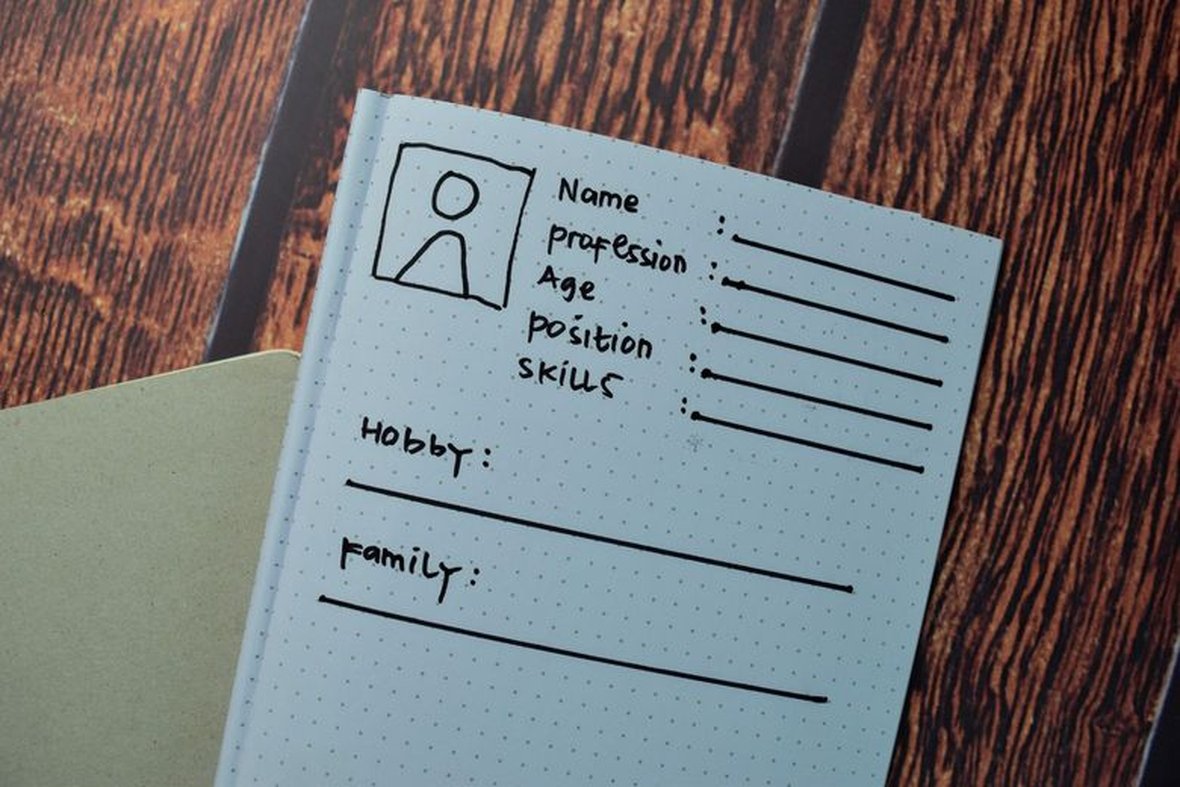
Creating audience personas for your charity website
When you sit down to write content for your charity website, do you have a specific reader in mind? If you don’t, then you’re at risk of ‘writing for everyone’ which can lead to a diluted, generalised message across your platform. By creating personas, you can target your audience groups with key messages at the right times and places to get tangible, lasting results from your digital content.
Our latest blog explains why personas are useful, where they fit into the planning process and tips for creating them. We’ll be covering:
- What are charity audience personas?
- Things to consider when creating personas
- What to include in a persona
- Why and how you should evidence your personas
- Personas in practice: Seeing your website in the eyes of your users
- Free template for your charity audience personas
What are charity audience personas?

Charity audience personas are profiles of fictional people who represent your organisation’s audience types. At a high level, your beneficiaries, volunteers and other stakeholders make up your audience groups. You can then segment these groups further by attributing personas to each of them. By doing so, you can bring your audience to life and determine what charity website content will meet their individual needs.
This isn’t about pigeon holing or stereotyping anybody – quite the opposite. This crucial content planning strategy is about taking the time to understand your users on a deeper level so you can help them.
If you’ve read or watched something in the past that really struck a chord with you, chances are you fit with a persona that particular brand was targeting. The reason their messaging resonated with you is because they’ve spent time getting to know their key audience. When planning your digital content or a marketing campaign for your charity, you need to do the same.
Personas will help guide your planning when:
• Mapping out ideal user journeys and comparing with existing website experience.
• Making adaptations to your website tailored to your personas to improve the user experience, for example, better call to actions and clearer language.
• Carrying out a more comprehensive overhaul to your charity's website design to aid navigation and engagement.
• Ensuring your charity website is focused on user needs rather than solely on the organisation’s needs.
Things to consider when creating personas
If you can, a good starting point is to gather together a small mix of people who work for / with your charity and those who regularly volunteer for you. Your group should have a good collective knowledge of your organisation’s supporters, beneficiaries and stakeholders.

To begin, you’ll need to consider your audience groups. Some of these might include:
• Employees
• Board members
• Volunteers
• Membership subscribers
• Grant-giving donors
• Partnering charities
• The local community
Your personas should reflect your audience’s aims, requirements and pain points. Think about their challenges and motivations, what are they trying to achieve or wanting to know? Next, identify the roles they play for your charity and what they want and need from you to best carry out those roles.
Once you have your list of audience groups and understand their unique goals and challenges, split into pairs to create one persona for each group. If you are carrying out this task on your own, aim to create 3 – 5 personas that best represent your audience groups. We recommend using an audience persona template to cover all bases. For ease, you can find one at the end of this article which you can adapt if needed.
What to include in a persona

There are many profile details, personality traits and features you can include when creating your personas, the important thing is to select the ones that will help your end goal. Here’s a list of some of the things you might want to include:
Picture: When sharing your personas with your wider team it helps to humanise your creation if everybody can envision what they look like. Search online or in magazines and newspapers for a photo of somebody who fits the personality and profile you’ve created.
Name: You’ll need to put a name to the face, not least so you can easily reference them in your planning meetings. Something simple like Fundraiser Fearne can help names stick in the mind.
Role: Consider the role they play for your charity and how committed they are to your organisation. Perhaps they turn up to volunteer every week without fail, or maybe they’re a donor from a local business that supports you with an annual fundraising event?
Demographics: Where they live, how old they are and their gender will help to form the basis of your personas.
Connections: Are they married? Do they have children? Deciding who they live with, where they work and what school their children attends will help you identify opportunities for wider community support.
Pastimes: Map out their day to detail their regular routines. Consider their work or study, activities and social groups.
How do they access their content?: Consider if they are confident users of technology, or do they prefer to receive their information in print, for example? How do they read their news and do they shop online or in store. If they know their way around the web, what is their preferred social media platforms?
Wider world: Have any past or current events influenced them in a significant way? What causes do they support and why? Are their feelings, attitudes or ideologies influenced by anything happening in the wider world?
Personal motivation: What aspects of their personal life has pushed them to your organisation? Why are they drawn to your charity over another? Has something happened to them or someone they know which has personally affected their feelings, attitudes or ideologies?
Goals and Challenges: What are they hoping to achieve by coming to your organisation? What are their limitations and pain points – is anything preventing them from being as involved as they’d like?
Evidencing your personas
Using your charity’s existing audience information that you have available is central to creating accurate, representative personas. Utilise your bank of information about your internal stakeholders as a starting point on which to build. Look at the evidence you already have, which might include social media, feedback forms and surveys. These will help you to build the initial profiles for your audience groups, especially if a particular demographic stands out to you.

Next, you can search data providers online to get broader demographic information about your audience. Try sites and tools like statista.com, Quantcast or Google AdPlanner to gather market and consumer data.
Another handy way to understand and evidence the behaviours of your audience is finding out if there are places where they meet and converse online. Forums and social media groups are a great start to find out what they are talking about and current issues they want to talk through.
For instance, if you’re a charity targeting parents then Mumsnet and BabyCentre will serve up thousands of posts for you to scour through. Searching for and joining relevant Facebook groups will give you access to a plethora of market research information about your target audience.
For more detailed or tailored personas, consider a questionnaire or some 1-2-1 interviews to bring personas to life. Just some of the questions you might ask your target audience might include:
- What age bracket to you fall into?
- What is your marital status?
- Where do you live?
- Where did you grow up?
- Do you have children? How many? What ages?
- What level of education did you achieve?
- What industry do you work in?
- What is your job title?
- What level of disposable income does your household have each month?
- Which supermarkets do you tend to shop at?
- Are you responsible for making the buying decisions in the household?
- Where do you go to for guidance or information?
- Which charities and organisations do you support and why?
- Do you have any accessibility requirements such as subtitles or audio description?
Don’t forget accessibility considerations. If you haven’t previously considered accessibility needs when developing your website, personas can help you to adapt how your audience can access your content. This handy tool on the government’s website will help you understand how adaptions can be made to accommodate personas with varying accessibility needs.
Personas in practice: Seeing your website in the eyes of your users

Once you’ve completed your templates, be sure to share your personas with the rest of the team. It’s vital that everybody involved in creating your content or developing your charity website understands the benefit of using personas. By involving your team in the creation of your organisation’s personas, they’re more likely to accommodate them in their planning.
Next, you’ll want to carry out a review your existing charity website to see it through the eyes of your users. Start by reading through one of your persona profiles and put yourself in their shoes.
Consider why that person has come to your website, how they reached it and what their end goal is. Walk their customer journey from start to finish, reading the content they would be reading – no matter how well you know it already. Ask yourself at every step “what do they want to see or read at this point?”. Your content should quickly and easily provide them with the information they are looking for, with a seamless tie in to a relevant call to action.
Repeat this process for each of your personas until you are confident that each one has been catered for in terms of your content, media and accessibility. Remember, the changes you make here and there may seem minor, but to that persona and the vast group of people they represent, it could make all the difference.
To keep your personas up-to-date, revisit and review their profiles at least once a year. This will help to ensure all your audience groups remain represented and any changing attitudes or pain points are reflected in your plans.
Download a template for creating personas
Using a persona template will help you identify all the important traits and features of your charity audience types to create your profiles. There are plenty of tried and tested versions online, though few relate directly to charity audience personas.
To help get you started, we’ve created our very own free template for creating charity audience personas, which you can download here. It includes all the usual demographic information you’ll need to consider, together with more specific information about your audience’s motivations, challenges and ideologies.









